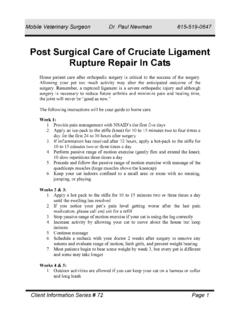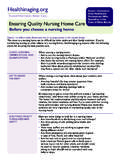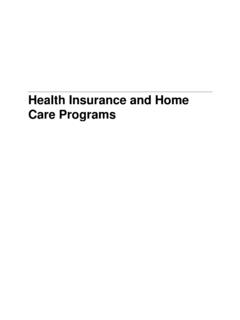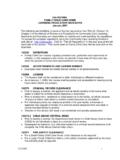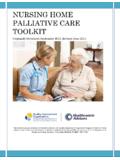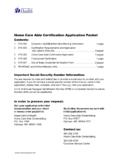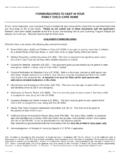Transcription of Thoracotomy Home Care - Mobile Vet Surgeon
1 Mobile Veterinary Surgeon Dr. Paul Newman 615-519-0647 Client Information Series # 123 Page 1 Post Thoracotomy home care home patient care after surgery is critical to the success of the procedure. Allowing your pet too much activity may alter the anticipated outcome of the surgery. The following instructions will be your general guide to home care . Pets that have undergone a Thoracotomy will have some pain for the first week or two and breathing can be difficult due to the incision through the ribs. Do not allow your pet to do anything that will cause increased breathing or exertion. General Exercise and Activity Restrictions: The patient should be confined for a minimum of two weeks following the surgery.
2 Only three activities are allowed during this time: 1. The patient can be in the house under the immediate control (leash) of the owner, on a carpeted surface only, without playing or fooling around. 2. The patient is left in a traveling kennel or exercise pen while unattended (see notes on exercise pens and kennels). Never put the patient in an outside run, patio or free in backyard. 3. The patient is under the direct supervision of the owner on a leash while outside for sunning or elimination's. Activities That Are Not Permitted: 1. No Free Activity (playing, jumping, running or long strenuous walks). 2. No Stairs (1 or 2 are alright to go outside) 3. No outdoor dog runs or "Doggie Doors" 4. No slippery floors (tile, linoleum or wood) 5. General confinements (garage, patio, bathroom, porch, laundry room, bedroom or kitchen) are okay Note: Most dogs do very well with the confinement restriction.
3 However if your dog is difficult to control or has an exceeding amount of energy, the use of small amounts of a tranquilizer may be necessary to help during this confinement period. If you cannot control your dog or you cannot take care of your dog post-operatively it may be better to board your dog with your veterinarian for the first 2-3 weeks after surgery. Other Post Operative Instructions 1. Sutures or Staples are removed in ten days. Use all medications as directed. 2. Licking at the incision should be discouraged because it may lead to chewing at the sutures or staples causing a wound infection. It may be necessary to bandage the leg or use an Elizabethan collar to prevent licking. Mobile Veterinary Surgeon Dr.
4 Paul Newman 615-519-0647 Client Information Series # 123 Page 2 3. Feed your pet its regular diet but reduce it by 10% to allow for reduced activity. 4. Any swelling or redness near the incision should be checked immediately. 5. If you notice your pet having difficulty breathing, rapid respirations, or any pale color on the gums, take them to the hospital or emergency clinic immediately. Resuming Activity Resuming full activity and exercise will be determined in most cases by your veterinarian after suture removal. Complications As with any surgical procedure, complications can occur. Failure to follow these instructions carefully can lead to sutures coming loose or other complications which can lead to costly second surgeries.
5 If your pet stops eating, has any vomiting or diarrhea, acts like they are in pain, or has any other signs that concern you, please feel free to call and talk to your veterinarian. Follow Up Instructions: Recheck in ten days: Sutures/Staples removal / Dissolving sutures Tegaderm clear bandage can be left on until it falls off or at suture removal Start antibiotic tonight Start pain medication tonight Seek veterinary care immediately if you notice difficulty breathing or pale gums

